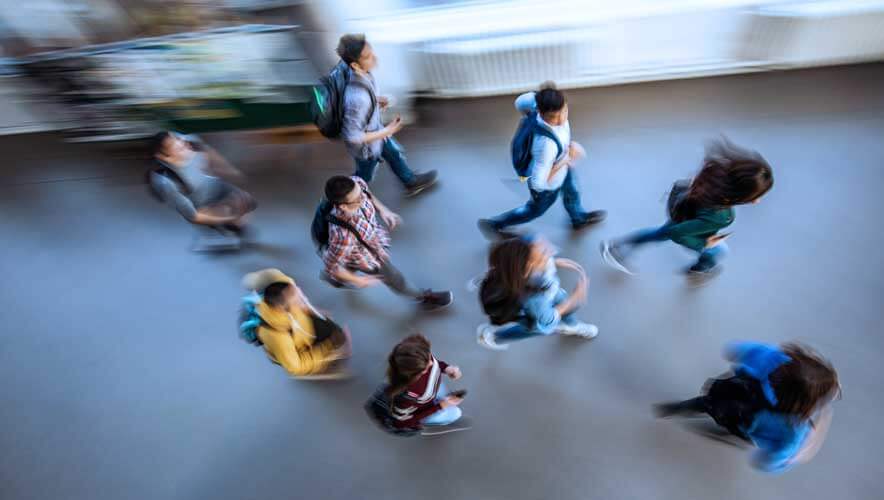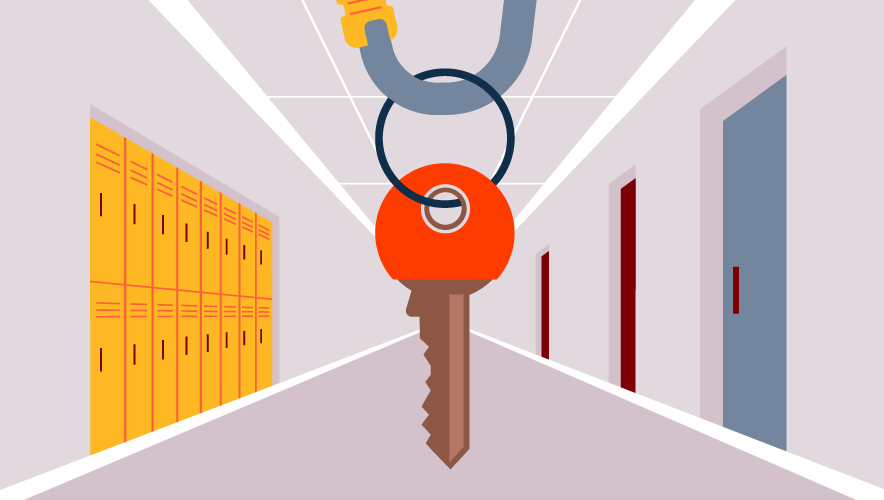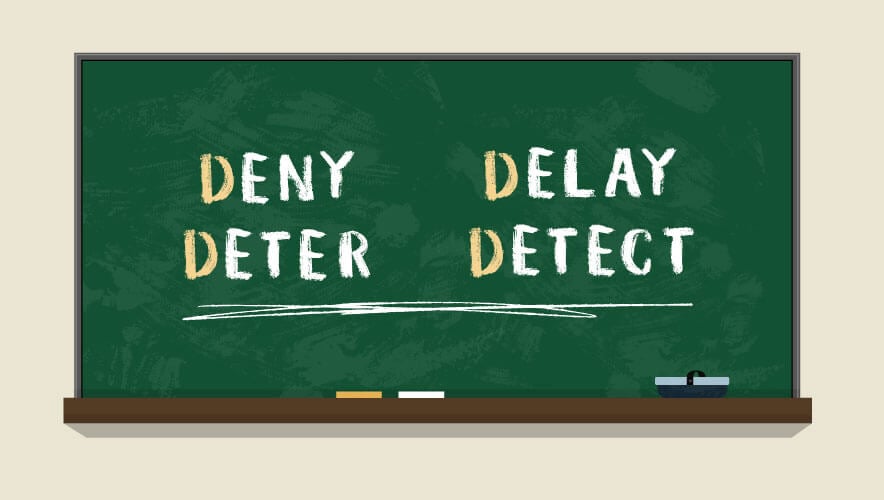A New Approach to Early Detection and Privacy in School Security
In the evolving landscape of school security, the conversation has shifted toward adopting a more proactive approach. This means anticipating potential threats and taking preemptive measures, rather than simply reacting to incidents after they have occurred.
Modern video security systems equipped with artificial intelligence (AI) based analytics can be employed to identify potential threats, allowing schools to take action early to potentially defuse situations before they escalate. Respecting the privacy of both staff and students, however, requires a delicate balance in how a system is deployed and utilized.
Early Detection through Artificial Intelligence
A common misconception among school administrators is that the mere presence of cameras equates to proactive security. Beyond simply installing cameras, setting up and utilizing them effectively is equally important, as they must be an integrated part of an overall incident response plan. Without real-time alerts and analytics, cameras serve more as a mild psychological deterrent than a functional one.
Few schools have the luxury of a 24/7 security presence watching over an entire campus. Staffing is always stretched, with many staff performing multiple roles throughout the course of a typical day. If a school is lucky enough to have a school resource officer, he or she is better deployed on the ground as a visible presence, rather than sitting behind a wall of monitors trying to oversee activities across the whole site.
By implementing AI-based video cameras that can detect people and vehicles, analytics can instantly trigger alerts when anomalies and events of interest occur. This enables schools to adopt a more proactive security stance. AI-based cameras effectively extend the reach of school security, making staff aware of events that might require intervention.
Many schools have restricted areas where students should not be at certain hours. Is someone in the chemistry supply room after hours? Why are so many cars congregating near the sports field at 3:00 a.m.?
Sound is another important characteristic that AI-based cameras can interpret. Glass breaking, gunshots, and yelling can all be detected with modern AI-based cameras. Even in places where cameras are absent, such as a bathroom, a sensor can detect excessive volume levels or yelling that might require intervention.
One school I work with has implemented a strict “no backpacks in the halls” policy during classroom hours. Students are allowed to bring backpacks to and from their lockers when arriving or leaving for the day, but at all other times, backpacks are not allowed in hallways. This policy is monitored and enforced with the assistance of AI-based cameras that can detect backpacks on individuals during certain hours of the day.
Another school has a “no hoodies over heads” policy because students have used hoodies to conceal their identity when they are planning something they know is forbidden. The school is using AI cameras to help enforce the policy.
Many AI-based surveillance cameras now support comprehensive license plate recognition apps that operate directly within the camera. Schools are actively testing and deploying this technology to proactively alert them to the presence of individuals arriving on campus who are not supposed to be there.
For example, school officials want to be notified when a parent who has been denied custody rights arrives on campus. Likewise, they want to be alerted when an expelled student arrives in the parking lot. These are just a few examples of proactive security measures in use at schools today.
Integration of Video Security and Access Control Systems
A critical aspect of proactive school security is the integration of video surveillance with access control. This allows school personnel to monitor who is entering and exiting the building in real time. It also ensures that only authorized individuals gain entry, while any unauthorized access attempts trigger an alert and highlight for review.
Tailgating—where an unauthorized person follows an authorized person into a secure area—is a common security breach. Video surveillance can help identify when such events occur, even if the access control system has been properly used by the initial entrant.
Integration also translates to ease of use for staff, as opposed to trying to navigate disparate systems. For schools, the integration of access control and video surveillance is not just about preventing incidents. It's about creating a safe and secure learning environment where students and staff feel protected.
Proactive Security and Privacy
Protecting students and staff on campus requires a nuanced approach that balances comprehensive security solutions with the privacy rights of individuals. Schools should look for AI-based security cameras with automatic privacy protection built into the camera—features that can generate both a redacted and unredacted stream representing people in the camera’s field of view. Having the camera do this privacy masking processing on the edge reduces the cost substantially compared to using more specialized backend servers.
One innovative deployment of this feature entails physically demonstrating both a visible security presence and the school’s commitment to privacy. In this example, the school community sees that surveillance is taking place via a public view monitor, for instance, near the principal's office. Simultaneously, the community sees that privacy is being respected, since everyone’s face is being masked or concealed.
This approach serves a dual purpose: it maintains security visibility while reassuring individuals that their privacy is being respected. Of course, there are nonredacted streams available to administrators behind the scenes when required. Still, this can go a long way toward assuring students and staff that they are not actively being surveilled.
Incident Response in Schools: The Critical Minutes
When it comes to incident response in school security, every second counts. In recent school tragedies, critical events unfolded in mere minutes. When intruders enter a school building, real-time access to recorded video from any and all cameras enables school security to see not only where they were three minutes ago but also how they got onto the campus, where they entered the building, what path they took through the school, and what their trajectory is, so security can anticipate and intervene.
Some video surveillance systems, particularly those that are solely cloud-based, can introduce unacceptable delays, and they might not function at all without uninterrupted Internet access. If the intention is to use surveillance footage exclusively as evidence of events that have already happened, the delay might be just an acceptable inconvenience. Unfortunately, schools don’t have the luxury of taking such an evidentiary approach to surveillance.
Time is of the essence when it comes to school security. Schools should invest only in solutions that can provide instantaneous access to recorded footage of any camera on campus. Integration of video security systems and access control systems is crucial to overall success.
Such integration represents another proactive measure that significantly enhances the school's ability to manage and respond to potential security threats. By providing examples of the technology in action and publicly demonstrating its efficacy in maintaining safety without sacrificing privacy, schools can adopt a more sophisticated, transparent, and effective security posture while building trust. As schools navigate the complex relationship between security and privacy, it’s clear that proactive measures are the way forward.
For more information, consult Safety and Security Guidelines for K-12 Schools by the non-profit Partner Alliance for Safer Schools (PASS) as a starting point for administrators. This resource offers best practices and guidance for a layered approach to school safety, addressing the complexity of the challenges schools face today.
Amy K. Bolin is the senior grants and diversity alliance program specialist for i-PRO Americas. In her role, Bolin specializes in all aspects of grant support and sales enablement with state and local government entities, education customers, and diversified business partners. Prior to her arrival at i-PRO, Bolin worked as an education consultant for nearly two decades with school districts across the United States. Her passion and experience in identifying goals with administrators and community leaders and implementing strategies of improvement translated into protecting the staff, students, visitors, and facilities that she spent years serving.

















